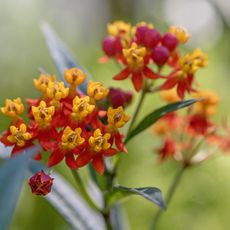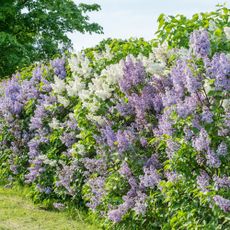Kangaroo Paw Plant - How To Plant And Care For Kangaroo Paws


Growing kangaroo paws can be a rewarding endeavor for the home gardener due to their brilliant colors and exotic form with flowers resembling, yes, a kangaroo paw. If you're interested in knowing what a kangaroo paw needs to live in your home, keep reading to learn more about the exciting kangaroo paws plant.
Kangaroo Paw Plants
Occurring naturally in southwest Australia, kangaroo paws belong to the genus Anigozanthos, of which there are eleven species - Anigozanthos flavidus being the most commonly grown.
Size, stalk height, and color of kangaroo paws are dictated by the different species, and arise as a result of hybridization. Kangaroo paws are moderately growing specimens commonly used for cut flowers, and are exported all over the world from commercial growing sites such as the USA, Israel, and Japan.
Kangaroo paws' bloom color is influenced by the fine hairs surrounding the flower (and on occasion the stalk), ranging from black to yellow, orange and red. Spring and summer bloomers outdoors, kangaroo paws may bloom anytime when grown indoors.
Pollinated by birds, the long flower stalks rise above the foliage and act as a red flag, attracting the birds to the nectar and providing them with a perch. Kangaroo paws' pollen-laden anthers allow pollen to be deposited on the feeding birds and thus, transferred from flower to flower as the birds feed.
How to Plant Kangaroo Paws
So what does a kangaroo paw need to live? The care for kangaroo paws requires either a growth habitat indoors, or a climate in USDA zone 9. Because of its tropical origins, kangaroo paws will probably need to be overwintered indoors to prevent freezing.
To care for kangaroo paws during this dormant phase indoors, keep the plant on the dry side unless it's actively blooming. Kangaroo paws do well in a variety of habitats and soil types, but prefer well drained, slightly acidic soil in sun exposures. Kangaroo paws work well in containers or as accent plants in borders during summer months.
Gardening tips, videos, info and more delivered right to your inbox!
Sign up for the Gardening Know How newsletter today and receive a free download of our most popular eBook "How to Grow Delicious Tomatoes."
When considering how to plant kangaroo paws, keep in mind its grass-like clumping habitat and size of 2 to 4 feet (61 cm. to 1 m.) by 1 to 2 feet (30+ to 61 cm.). Depending on your climate, they are semi-deciduous to evergreen plants, with 1 to 2 foot (30+ to 61 cm.) long, sword-shaped foliage of light to dark green fans. Also known as cat's paw and Australian sword lily, growing kangaroo paws spread from rhizomes.
Propagation of kangaroo paws then can be accomplished via spring division or by sowing ripened seeds. There is limited care for kangaroo paws with regards to pests, as they are resistant to most insect marauders. When grown as indoor specimens, however, they may be susceptible to spider mites.
Types of Kangaroo Paw Plants
There is a Christmas season plant on the market and its name is the Red and Green kangaroo paw (Anigozanthos manglesii), otherwise marketed as Kanga. Known as the floral emblem of Western Australia, this plant is referred to as reindeer paw in the United States and has unique red and green flower coloration. The cultivar Anigozanthos 'Bush Emerald' has similar colored flowers and is generally easier to grow. Other kangaroo paws worth considering are:
- ‘Bush Ranger' - a drought tolerant cultivar with orange flowers, which can also tolerate mild frosts.
- ‘Dwarf Delight' - a long living, frost hardy variety
- Anigozanthos flavidus or ‘Tall Kangaroo Paw' - a type that adapts to many types of soil conditions and climates, although still delicate in heavy frost
- ‘Pink Joey' - a variety with salmon pink flower spires
- ‘Black Kangaroo Paw' (Macropidia fuliginosa) - which should be grown in well-draining soil in full sun and is particularly susceptible to frosty climes. It has black hairs through which its green can be seen.

Amy Grant has been gardening for 30 years and writing for 15. A professional chef and caterer, Amy's area of expertise is culinary gardening.
-
 Is Tropical Milkweed Bad For Your Butterflies? What You Can Do
Is Tropical Milkweed Bad For Your Butterflies? What You Can DoTropical milkweed is a harmful plant that can trick both humans and monarch butterflies, and is contributing to declining monarch populations.
By Teo Spengler
-
 7 Fragrant Hedge Plants For Heavenly Floral Boundaries
7 Fragrant Hedge Plants For Heavenly Floral BoundariesA fragrant hedge will boost your home's curb appeal, providing a feast for the senses with glorious flowers and a delicious aroma.
By Mary Ellen Ellis